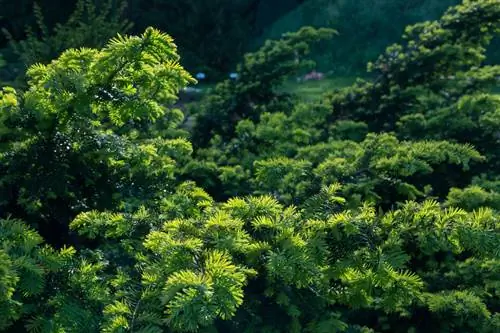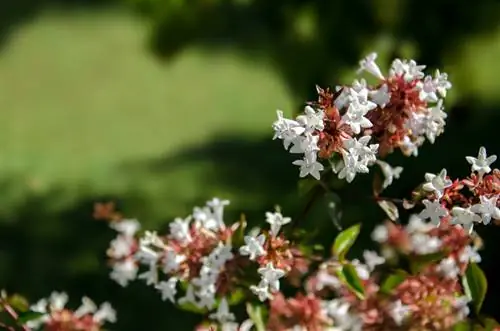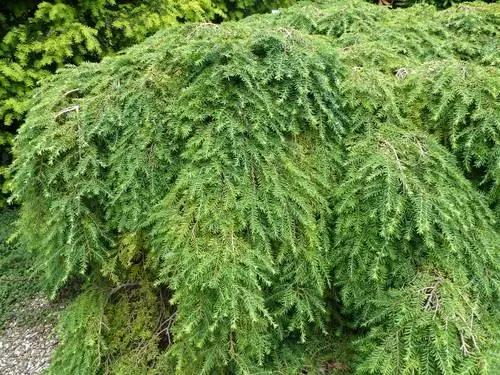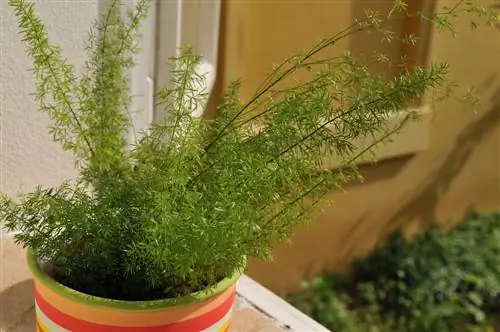- Author admin [email protected].
- Public 2023-12-16 16:46.
- Last modified 2025-01-23 11:20.
The hemlock is a separate genus in the pine family. Different shapes and sizes of hemlock firs can be found commercially. The evergreen, frost-hardy trees require a little more care to thrive.
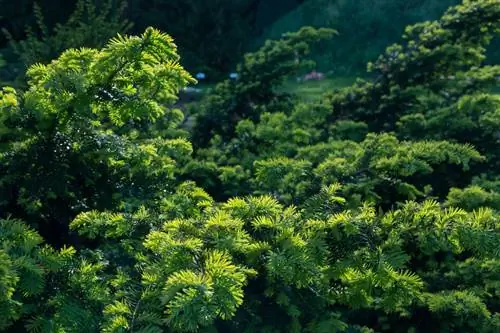
How do I properly care for a hemlock?
Caring for the hemlock requires a wind-protected location, low-lime and nutrient-rich soil, additional watering in dry conditions, pruning in spring and fertilizing with acidic fertilizer. In winter, protection from ground frost and excessive evaporation is recommended.
The hemlock firs prefer a location that is not too sunny, as sheltered from the wind as possible, and a soil that is low in lime and rich in nutrients. The pressure-sensitive roots do not run very deep. Under good conditions and appropriate care, hemlocks can grow very old.
Do you have to water the hemlock additionally?
Tsuga canadensis needs additional watering in prolonged drought and on sandy soil. If the tree is in full sun, more frequent watering is also necessary to prevent dry damage to the needles.
When can you transplant hemlock?
Spring is better than autumn for transplanting evergreen trees, as the conifers still need to absorb sufficient water through their hairy root system even in winter.
When and how should you prune hemlocks?
- cut before budding in spring,
- By cutting back the annual wood, the tree grows bushy and wide,
- shortening the side shoots promotes slimmer growth,
- If possible, do not cut into the perennial wood, as it is reluctant to sprout.
Are hemlocks susceptible to diseases and pests?
Trees weakened by incorrect care can easily be attacked by mealybugs or fungi. This causes needle and shoot damage, which can lead to the trees dying after a few years. Yellowing of the needles is not an illness, but rather due to a lack of water supply.
Do hemlocks need to be fertilized?
The nutrient requirements of hemlocks are quite large. For he althy growth, especially if the soil does not have the desired quality, fertilizing with acidic fertilizer (€8.00 on Amazon) is recommended.
How hardy are hemlocks?
Tsuga canadensis has good frost resistance. The dwarf and some hanging varieties are more sensitive to frost. Wind protection is therefore recommended in winter to avoid excessive evaporation. A layer of dry leaves, bark mulch or brushwood in the root area protects the plant from severe ground frost.
Tip
For smaller gardens, e.g. B. the varieties Compakta, Minuta, Nana or Greenwood Lake, which grow more in width than in height and not particularly quickly.

